#maria de' medici
Photo
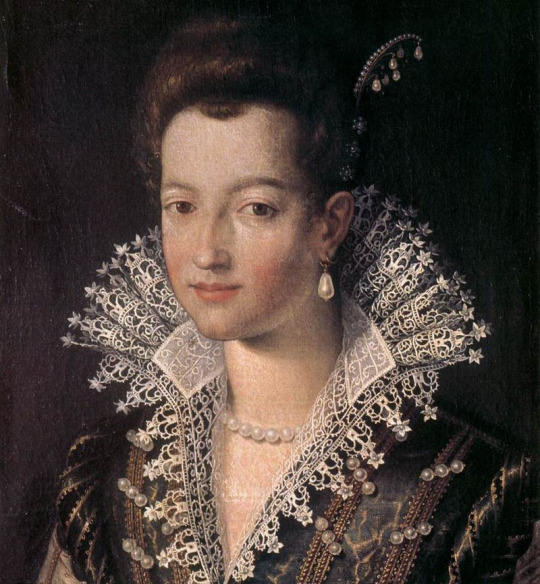
Santi di Tito (Italian, 1536-1603)
Portrait of the Young Maria de' Medici, c.1590s
Opificio delle pietre dure
#Santi di Tito#italian art#italy#italian#maria de' medici#medici#art#fine art#fine arts#oil painting#female portrait#female#portrait#woman#women in art#1500s#classical art#traditional art#european art#europe#europa#Mediterranean#european#1500s fashion
209 notes
·
View notes
Text
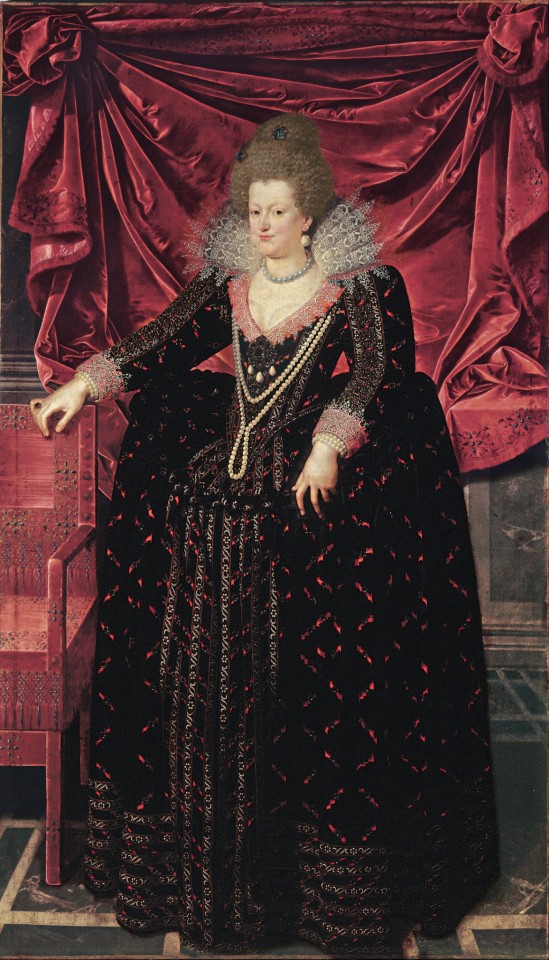
Portrait of Maria de’ Medici. By Frans Pourbus the Younger.
#frans pourbus the younger#royaume de france#maria de' medici#reine de france#vive la reine#full length portrait#maison de bourbon#full-length portrait#reines de france#régente du royaume de france
13 notes
·
View notes
Text
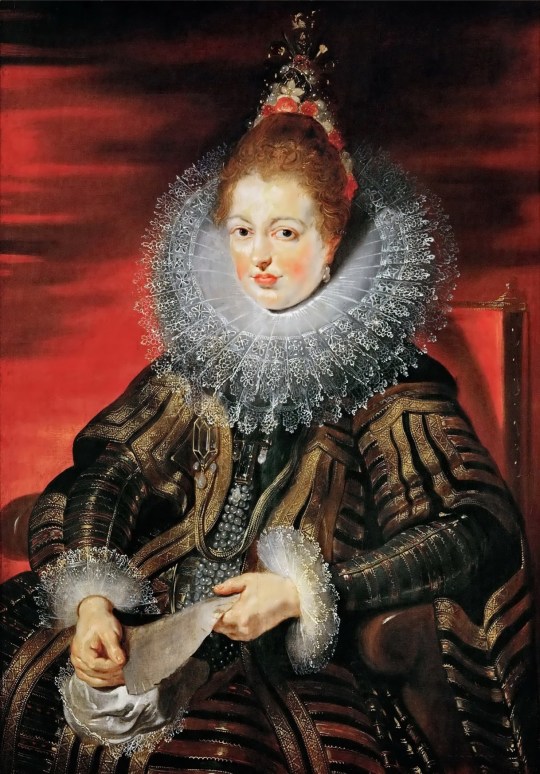
Peter Paul Rubens • Infanta Isabella Clara Eugenia, Wife of Archduke Albrecht VII • c. 1613/15
The Resplendent Outfit: The outrageous, extravagant, sometimes humorous and often beautiful outfits worn by subjects of old portraits; sometimes captioned, as an attempt at satire; a little history occasionally thrown in the mix.
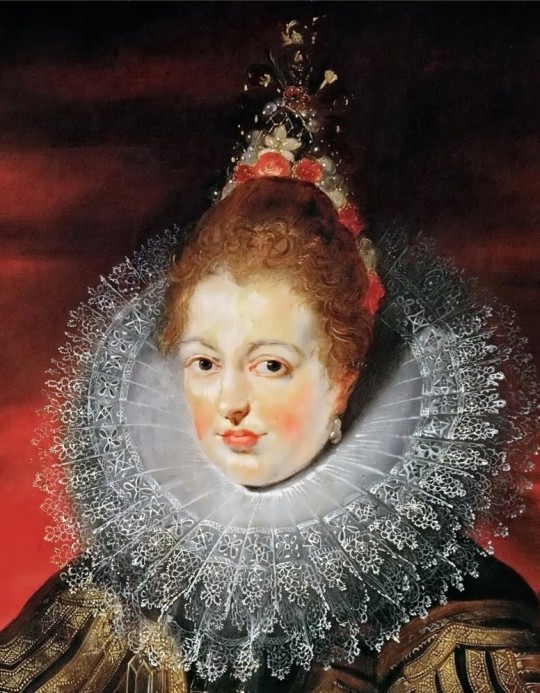

Details
A Brief History of the Ruff
In the 16th century ruffs became popular for both men and women. It was a separate accessory whose function was to protect the overall garment from becoming soiled at the neck. It could be removed and laundered separately. The ruff evolved from the medieval split collar which likely served the same function.
The ruff collar started as a simple circle and throughout the century evolved into rather large, stiff contraptions (such as the one worn in the portrait above) that restricted movement. Because of this, it was thought to force its wearer to conform to proper posture. Its size and impracticality were somehow symbolic of the wealth of its owner.
The popularity of the ruff extended well into the 17th century.
Fun Fact! These collars are sometimes referred to as Medici collars as they were popularized by Maria de’ Medici, Queen of France.
#portrait#art#painting#royal portraits#baroque art#peter paul rubens#dutch artist#history of the ruff#fashion history#16th century fashion trend#fine art#the resplendent outfit#maria de' medici
5 notes
·
View notes
Text

some sketches of Lorenzo de Medici and Galeazzo Maria Sforza :)
⭐ places I’m at! bsky / pixiv / pillowfort /cohost / cara.app / tip jar!
#early days probably. in their 20s? altho the first one is definitely more like. teenagers.#anyway. hello. I’m back from visiting family in the ICU. I connected dots about Galeazzo and Lorenzo so thank you#to everyone who helped with that!#at long last. a conclusion was reached. I’m also going to bed now.#drawing tag#italian renaissance tag#the last 3 were ideas for more serious drawings tbh. the hand one is going to have blood on it for sex and violence reasons. ofc#the snake thing was a clown car connect the dots moment because I was looking up something about tristano and went#‘what the fuck’ when I saw the image of the coat of arms on Wikipedia. like. yeah okay that’s thematically on point for#this family. but WHY#lorenzo de medici#galeazzo maria sforza
271 notes
·
View notes
Text


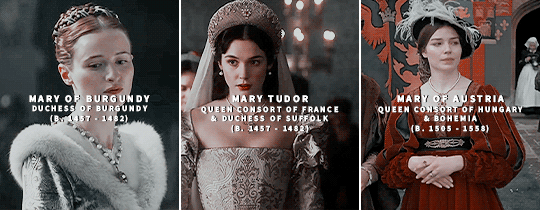
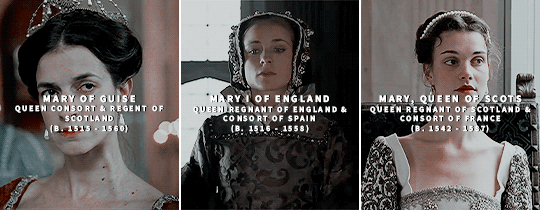
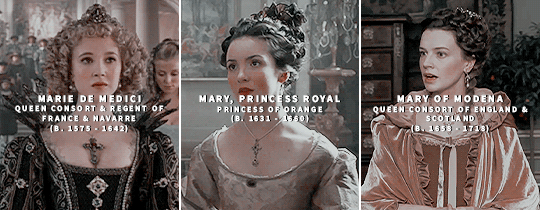
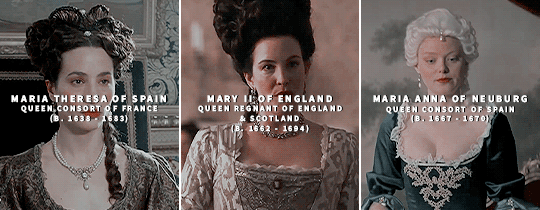
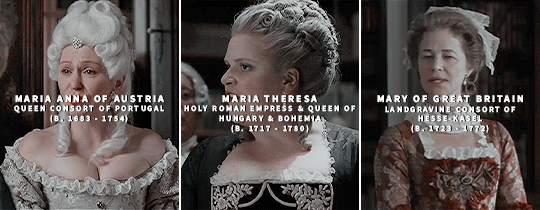

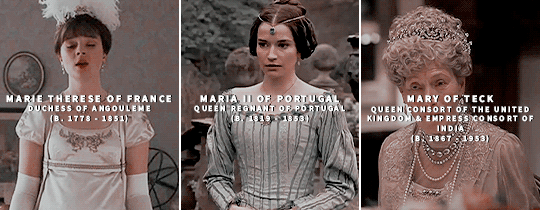
↳ Historical Ladies Name: Mary/Marie/Maria
#mary of woodstock#mary of waltham#mary of guelders#mary of burgundy#mary tudor#mary of guise#mary i of england#mary queen of scots#marie de medici#mary princess royal#mary of modena#maria theresa of spain#mary ii of england#maria theresa#marie antoinette#mary of teck#my gifs#creations*#historicalnames*#historyedit#efoor
467 notes
·
View notes
Text

The Pazzi conspiracy by Stefano Ussi
#pazzi conspiracy#pazzi#medici#family#florence#renaissance#assassination#cathedral of santa maria del fiore#pazzi plot#giuliano de medici#lorenzo de medici#francesco de pazzi#francesco salviati#girolamo riario#pope sixtus iv#art#history#europe#european#italy#jacopo de pazzi#federico da montefeltro#duke of urbino#rinaldo orsini#bernardo bandini dei baroncelli#jacopo di poggio bracciolini#giovan battista da montesecco#antonio maffei da volterra#stefano da bagnone#florence cathedral
125 notes
·
View notes
Text







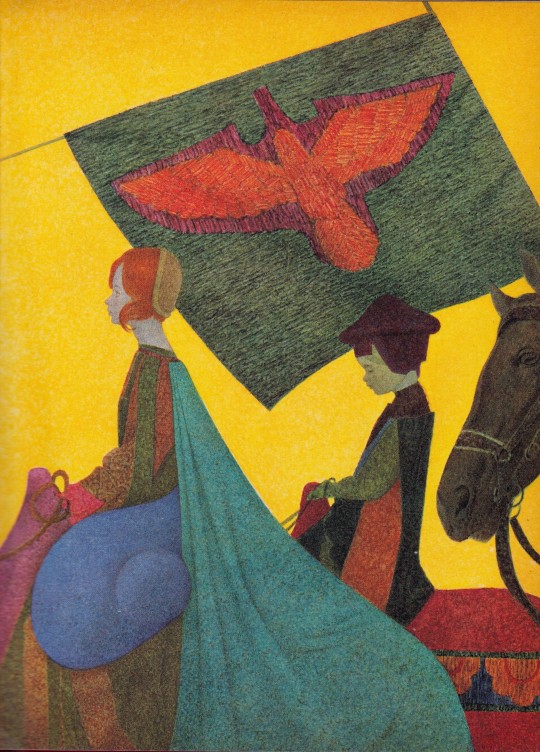

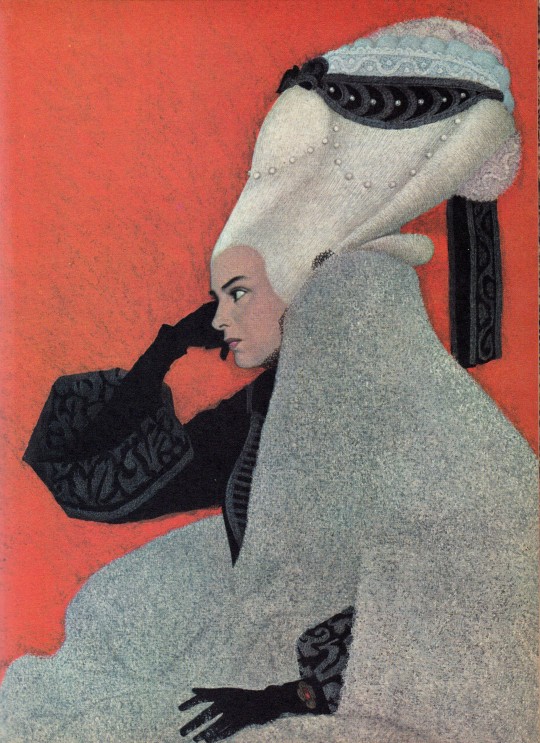

Grandi Regine
Giuliana Pistoso
Illustrazioni di Ugo Fontana
Mondadori, Milano 1968, 155 pagine, 20x28cm
euro 15,00
email if you want to buy : [email protected]
Galla Placidia - Adelaide di Borgogna - Margherita d'Austria - Isabella di Castiglia - Caterina de Medici - Elisabetta d'Inghilterra - Maria Teresa d'Austria - Caterina di Russia
Le protagoniste delle vicende narrate in questo volume - otto eccezionali figure di sovrane - abbracciano e dominano, anche per la loro longevità, un arco vastissimo di tempo: circa quattrocento anni di storia. Intelligenza, sensibilità, coraggio, intuito politico sono le doti che queste regine leggendarie, quasi un simbolo dei tempi in cui vissero, rivelarono nel corso del loro governo, meritando l'attributo di "grandi". In queste pagine, impreziosite da documenti e tavole di raffinata concezione, le grandiose figure delle otto regine riacquistano per il lettore di oggi contorni umani, pur sfumati fra toni di luce e d'ombra, fra verità e leggenda.
Grandi regine è un volume di biografie di sovrane dall'antichità fino all'età moderna (da Galla Placidia e Caterina di Russia): per illustrare il testo di Giuliana Pistoso, Ugo Fontana si è ispirato alla storia dell'arte, soprattutto del Rinascimento, rielaborandone in modo originale l'iconografia.
24/07/23
orders to: [email protected]
ordini a: [email protected]
twitter:@fashionbooksmi
instagram: fashionbooksmilano
designbooksmilano
tumblr: fashionbooksmilano
designbooksmilanoillustration books
#grandi regine#Giuliana Pistoso#Ugo Fontana#Galla Placidia#Adelaide di Borgogna#Margherita d'Austria#Isabella di Castiglia#Caterina de Medici#Elisabetta d'Inghilterra#Maria Teresa d'Austria#Caterina di Russia#illustration books#fashionbooksmilano
3 notes
·
View notes
Text
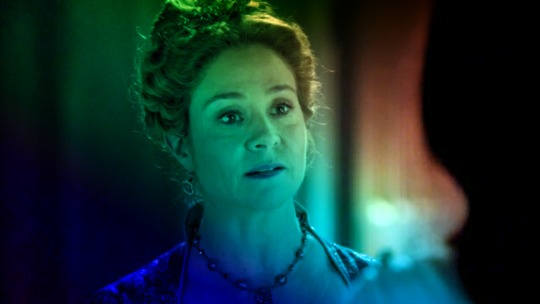
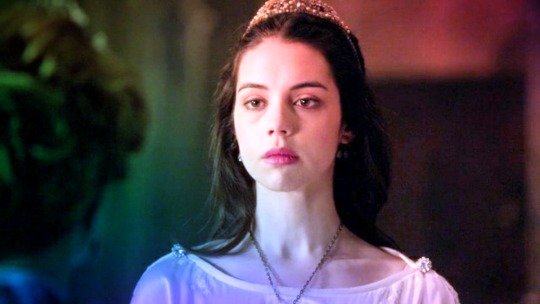
Reign 2013-2017/02-18
Maria e Caterina
"Devi sapere che l'ho informato del tuo piano di mandare i suoi uomini nel tuo Paese! Già sapeva ovviamente che intendevi tradirlo... e abbandonarlo!"


#mary stuart#adelaide kane#catherine de medici#megan follows#season2#02×18#reign#francis de valois#toby regbo#frary#mary×francis#face expression#queens#italian translations#maria e caterina
4 notes
·
View notes
Text
Whatever you do, don’t think about Lorenzo and Clarice’s eldest child Lucrezia and her eldest child Giovanni (their first grandchild) dying within a month of each other, at the ages of 83 and 63 respectively
1 note
·
View note
Photo
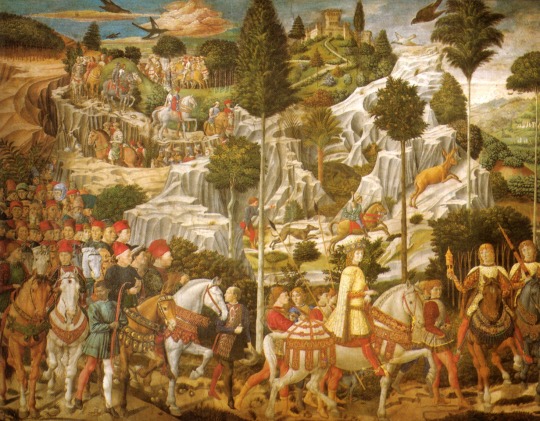

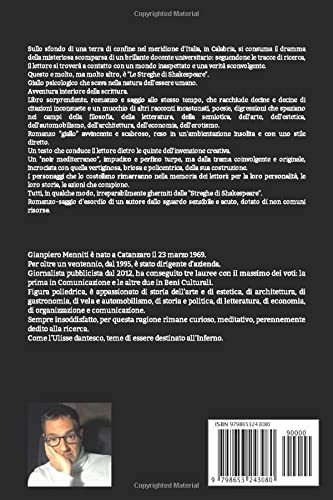
Da: LE STREGHE DI SHAKESPEARE - di Gianpiero Menniti
L’ISTANZA NARRATIVA
L’Io dell’autore è una rappresentazione del mondo, una rappresentazione fenomenica che si sostanzia in costruzione narrativa del senso, nella scia della necessità di costruzione delle rappresentazioni sociali.
Questa necessità del nostro sistema cognitivo ha un luogo che va oltre la mente e che è il logos, il discorso; la sua ricerca è volta verso l’interpretazione; il suo metodo è quello della descrizione.
Dunque, narrare è costruire la realtà, una porzione di realtà, o una realtà altra consapevole della sua opposizione, del suo divenire “essere” per opposizione allo spazio occupato dalle altre essenze, cioè dalle altre interpretazioni di essenze.
Può un testo “essere”?
In senso materiale è facile rispondere di sì, ma sarebbe ben poca cosa se l’essere fosse esclusivamente il risultato della materialità degli eventi.
No, l’essere è l’identità comune tra i molteplici, è quanto si trova a essere partecipato dai molteplici.
Se l’essenza del pensiero umano è ciò che l’umano conosce, allora un testo, un testo narrativo, è parte di quest’essenza, un’essenza che non si origina nel nulla per ritornare nel nulla, ma che è sempre esistita e sempre sarà.
Non è generata poiché essa è nella molteplicità inespressa dell’umano, è nei suoi saperi, è essenza dell’umano poiché conoscenza fenomenica del mondo e rappresentazione collettiva, comune, interrelata.
Benozzo Gozzoli (1420 - 1497): "Corteo con Lorenzo, Piero e Giovanni de' Medici", 1459 - parete est, ciclo di affreschi della Cappella dei Magi, palazzo Medici Riccardi, Firenze
In copertina: Maria Casalanguida, Interpretazione de ‘Il bagno turco di Ingres’, 1976, collezione privata
5 notes
·
View notes
Text

The portrait of Anna Maria Franziska of Saxe-Lauenburg (1672-1741), Gian Gastone de' Medici's wife, Grand Duke of Tuscany, is part of the so-called "serie aulica" (or "dei serenissimi principi"), a collection of portraits of the most important members of the House of Medici.
The work and a matching portrait of her husband entered together into the Uffizi Gallery on 29 November 1726. The artist is not known, but the portrait planning and modus operandi have been recognized strictly close to that one of Violante Beatrice of Bavaria, sister-in-law to Gian Gastone, for which the name of the painter Giovanni Gaetano Gabbiani is documented. It seems that we should attribute him all the last portraits of the "serie aulica", similar in execution. The source for the portrait of Grand Duchess Maria Anna Franziska is not known, since she refused to come to Florence after her wedding and stayed in Bohemia for the rest of her life. Probably a miniature or a small portrait that depicted her still young, since in 1726 the Grand Duchess was fifty-four already.
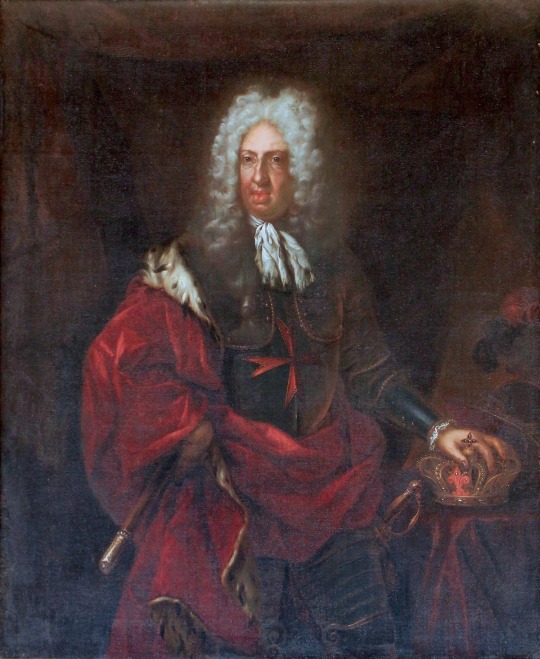
The portrait of Gian Gastone de' Medici, Grand Duke of Tuscany, is part of the so-called "serie aulica" (or "of the most serene princes"), a collection of portraits of the most important members of the House of Medici.
#visual#Ascania#she is my wife#Anna Maria Franziska of Saxe-Lauenburg#gian gastone de' medici#medici
0 notes
Text
Matrimoni e banchetti: le nozze di Maria de’ Medici
Matrimoni e banchetti: le nozze di Maria de’ Medici
5 ottobre 1600.
Jacopo Chimenti da Empoli Le nozze di Maria de’ Medici
Maria de’ Medici, figlia del granduca Francesco I Medici e di Giovanna d’Austria, sposa per procura Enrico IV di Borbone, re di Francia.
Una data storica perché segnò un avvicinamento tra i due Stati, ridusse notevolmente il debito che la corona francese aveva accumulato nei confronti dei banchieri italiani, la dote infatti…

View On WordPress
0 notes
Text
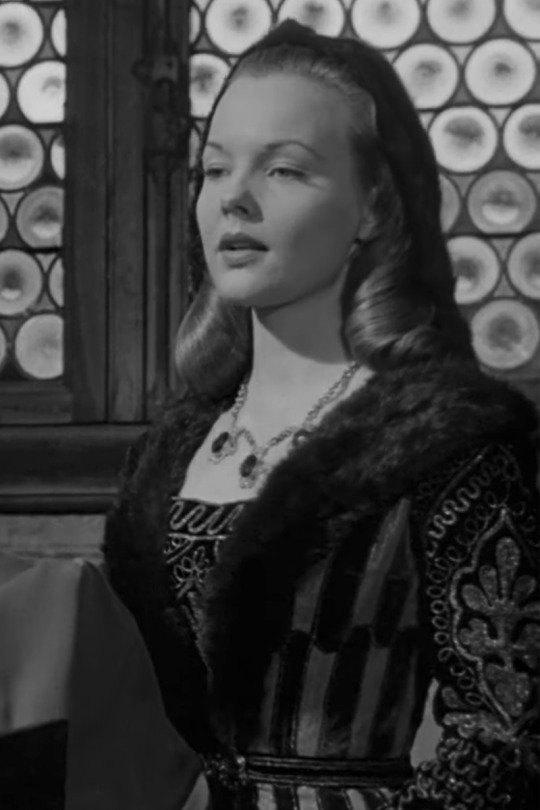
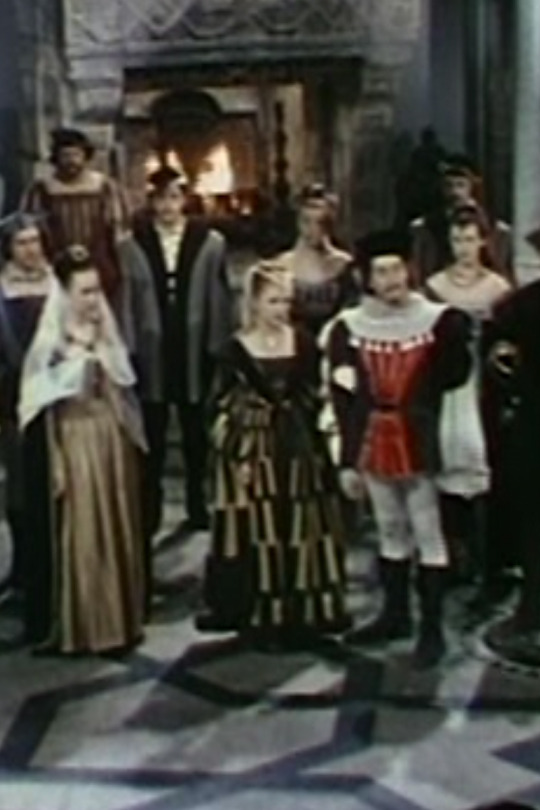
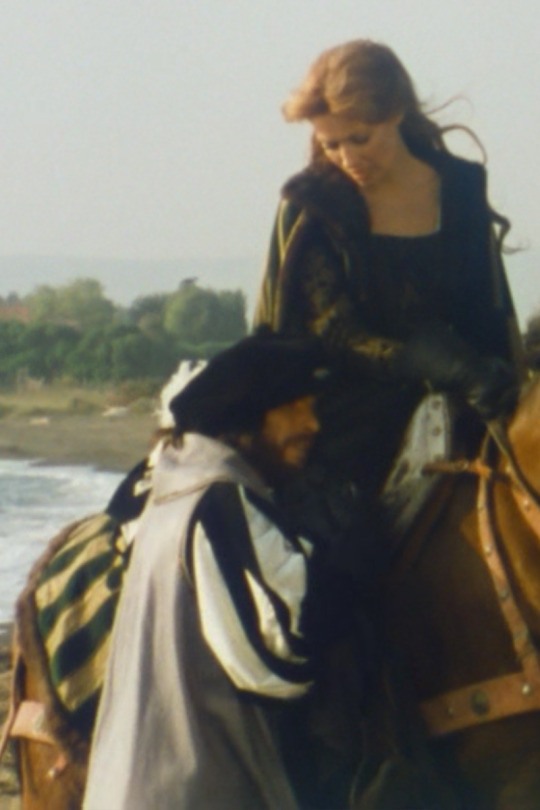


This beautiful green and yellow coat was almost certainly created for the 1949 film Prince of Foxes, where Wanda Hendrix wore it as Camilla Verano. The costume was later seen in Lucrèce Borgia in 1953 on an extra, and in 1977, Maureen Kerwin wore the ensemble as Lucrèce Borgia in the second episode of Les Borgia ou le sang doré. In 2006, the costume still appeared in beautiful condition in Los Borgia on Maria Valverde as Lucrecia Borgia, and finally, in 2016, it was worn by Annabel Scholey as Contessina de’ Bardi in Medici: Masters of Florence.
This costume has been used for 67 years and is likely still in use, which makes it the longest continual usage of a costume that Recycled Movie Costumes has been able to record.
Costume Credit: Lucia, Katie S.
Follow: Website | Twitter | Facebook | Pinterest | Instagram
#prince of foxes#lucrezia borgia#wanda hendrix#los borgia#maria valverde#annabel scholey#medici#costume drama#period drama
563 notes
·
View notes
Text
poetry might not convince me to pay attention or care about the medici family beyond necessity, but you CAN convince me to turn the spotlights directly onto lorenzo de' medici with phrasing like this. intimately linked. even wedded, you say. and with galeazzo maria sforza's named mentioned. fascinating choice of words.


Magnifico: the Brilliant Life and Times of Lorenzo de’ Medici, Miles J. Unger
#(staring intently at this phrasing) and with galeazzo maria sforza you say#its because galeazzo is here. im paying attention bc when any of the maria sforzas show up and im there baby#anyway i talk shit about the medici but i am singularly curious about guiliano. not for. medici reasons. he has such a read on#francesco de' pazzi it makes me write some really high drama soap opera plot bullshit#this isn't a joke. there's a version where they had summer time fling that ended like saltwater in the eyes#also i say pay attention beyond necessity. to clarify. i take my job as a medici hater seriously. i will read many texts abt them#admittedly its the other medicis im usually reading abt bc lorenzo is competing against the sforzas for my attention#i am. also. constructing an hbo renaissance conspiracy show in my head. you can't half ass the cast or the plot u know#not for a show that exists as vivid scenes in your imagination.#anyway i become intrigued by the medici when its connected to One Of My Guys. none of the medici are My Guys. there needs to be a third#none of the brigata except maybe braccio are my guys either. you need a sforza or one of machiavelli's guys
48 notes
·
View notes
Text
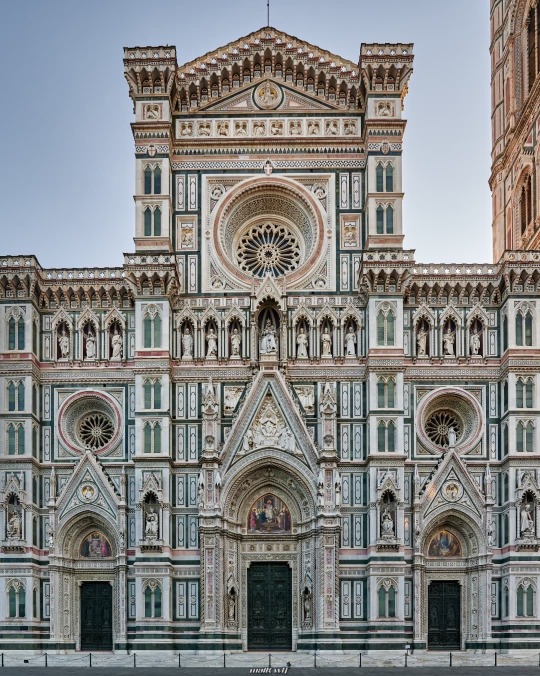




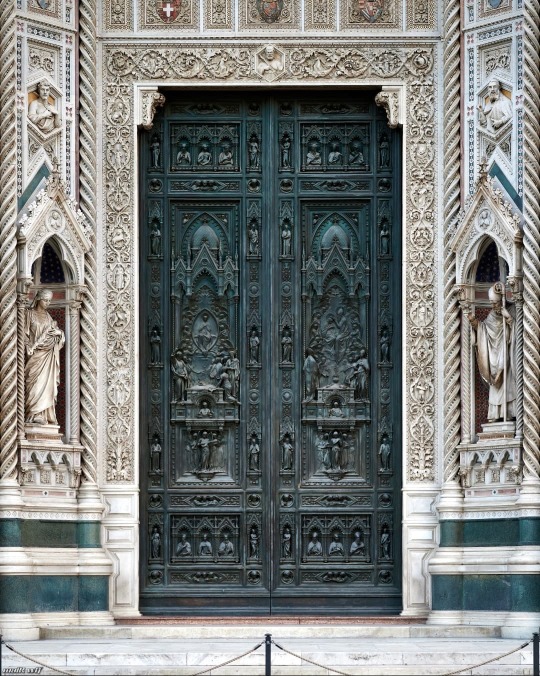


Santa Maria del Fiore, Florence.
The first façade of the cathedral, and at the request of the Grand Duke Francis I Medici who found it outdated and not in keeping with the new times, was demolished between 1587 and 1588. So it remained bare until 1887 when it was completely rebuilt according to the project of the Italian architect Emilio de Fabris based on the design of Arnolfo di Cambio (architect and sculptor, 1232/45-1310) although it has been attributed to Giotto di Bondone (painter, architect and sculptor, 1267-1337). The façade is neo-Gothic style with white, green and pink marbles wanting to give unity and harmony with the rest of the cathedral.
(Photos ©️Maik Monuments)
285 notes
·
View notes
Text
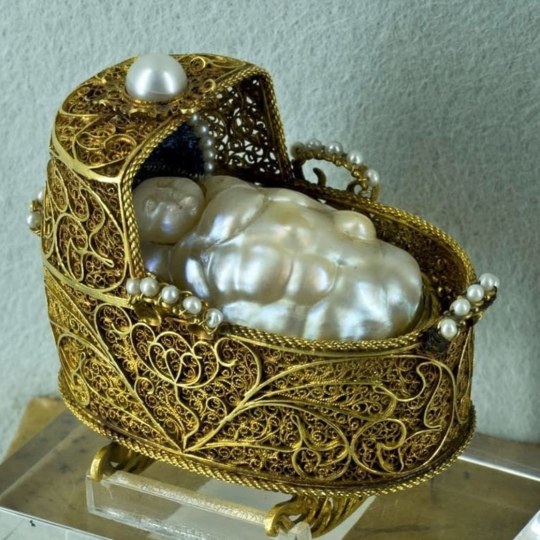
Pearl baby in goldwork cot • Palatine Elector Johann Wilhelm sent this to his pregnant wife Anna Maria Luisa de’ Medici in 1695
148 notes
·
View notes